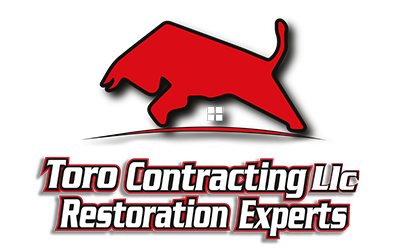In this article, we’ll dive into the essential decks maintenance tips for longevity that will help you protect your investment and keep your outdoor haven looking its best year after year. From simple cleaning routines to savvy inspections and timely repairs, you’ll discover practical, expert advice to extend the life of your deck. Whether you have a wooden deck, composite materials, or a blend, these tried-and-true tips will empower you to tackle common challenges and prevent costly damage down the road.
Key Takeaways
Leak Prevention: Seamless gutters, fabricated on-site in one continuous piece, virtually eliminate leak-prone joints for superior water protection.
Cost vs. Value: Sectional gutters are more budget-friendly upfront and DIY-friendly, but may incur higher maintenance costs over time due to joint repairs.
Durability: Fewer seams in seamless gutters mean less corrosion and longer service life, especially in areas with heavy rainfall or snow.
Installation Time: Sectional gutters install faster with standard lengths, whereas seamless gutters require specialized equipment and precise on-site fabrication.
Aesthetic Appeal: Seamless gutters provide a cleaner, more streamlined look that enhances curb appeal and can be custom-matched to your home’s trim color.
Repair Flexibility: Sectional systems allow easy replacement of individual segments, minimizing repair costs if only a portion of your gutter is damaged.
Maintenance Requirements: Seamless gutters need less frequent cleaning and inspection since debris is less likely to accumulate at seams.
Material Choices: Both styles are available in aluminum, copper, and steel—but seamless typically pairs best with higher-end materials for a cohesive finish.
Climate Considerations: In freeze-thaw climates, seamless gutters resist ice dam leaks better, while sectional systems may require more frequent sealing.
Long-Term ROI: Investing in seamless gutters often yields greater savings over time through reduced repairs, enhanced performance, and increased home value.
Why Decks Maintenance Tips for Longevity Are More Important Than You Think
When it comes to preserving the beauty and safety of your outdoor space, decks maintenance tips for longevity are absolutely essential. A deck is more than just a wooden platform; it’s a place where families gather for barbecues, friends enjoy summer evenings, and memories are made year after year. Yet, many homeowners underestimate the critical role that regular maintenance plays in extending the life of their decks..
Understanding the importance of decks maintenance tips for longevity is backed by compelling data. According to the American Wood Protection Association, decks that receive regular upkeep can last between 10 to 15 years longer than unmanaged decks. This not only translates into substantial cost savings but also minimizes the risk of accidents due to compromised decking boards or railings. Given that the average cost of deck replacement can range from $4,000 to $15,000, investing time and effort in maintenance is a smart financial decision.
How to Apply Decks Maintenance Tips for Longevity Step by Step
Maintaining your deck is essential for ensuring it stands the test of time. By following a clear, step-by-step approach to decks maintenance tips for longevity, you not only protect your investment but also create a beautiful outdoor space to enjoy year-round. In this section, we’ll walk through detailed, practical steps you can take to keep your deck in top shape.
Step 1: Regular Cleaning
One of the foundational decks maintenance tips for longevity is keeping your deck clean. Dirt, algae, mold, and mildew can accelerate the deterioration of your wood or composite materials.
– Sweep your deck weekly: Use a broom to get rid of leaves, dirt, and other debris.
– Wash with a mild detergent: Every few months, mix warm water with a gentle soap or deck cleaner and scrub surfaces with a soft-bristle brush.
– Pressure wash responsibly: If you own a pressure washer, use it on a low setting to avoid damaging the wood fibers.
Following these cleaning practices prevents buildup and prepares your deck for other maintenance steps.
Step 2: Inspect for Damage
Regular inspections allow you to catch small problems early, another critical decks maintenance tips for longevity.
– Check for loose or protruding nails and screws.
– Look for splintering, cracks, or warping in the boards.
– Examine railings and stairs for stability.
– Identify signs of rot or insect damage by probing suspicious areas with a screwdriver.
Addressing these issues promptly avoids costly repairs down the road.
Step 3: Sand and Smooth
If you notice rough patches or splinters during your inspection, the next step in decks maintenance tips for longevity is sanding.
– Use medium-grit sandpaper to gently smooth out rough edges.
– Focus on high-traffic areas that receive the most wear.
– Wipe down dust thoroughly before applying sealants or finishes to ensure proper adhesion.
Sanding not only enhances aesthetics but also increases safety by reducing the risk of injuries.
Step 4: Seal or Stain Your Deck
Applying a protective barrier is one of the most effective decks maintenance tips for longevity.
– Choose between a water-repellent sealant or a stain with sealing properties, depending on your deck’s material and desired look.
– Apply evenly with a brush, roller, or sprayer on a dry day with no rain forecast.
– Focus on edges and end grains, where water penetrates most easily.
– Reapply every 1-3 years or as recommended by the product to maintain protection.
Sealing helps prevent water damage, UV fading, and mildew growth.
Step 5: Protect Your Deck from Elements
Shielding your deck from weather extremes is vital.
– Use outdoor rugs or mats in high-traffic areas for added protection.
– Invest in a quality cover or awning, especially if you live in areas with strong sun or frequent rain.
– Rearrange furniture occasionally to avoid uneven wear and fading.
– Trim nearby vegetation to reduce mold growth caused by trapped moisture.
These seemingly small actions contribute significantly to your deck’s longevity.
Step 6: Seasonal Maintenance
Adjust your maintenance routine according to seasons to ensure your deck stays in optimal condition year-round.
– Spring: Perform a deep clean, inspect for winter damage, and reseal if necessary.
– Summer: Focus on moisture control by cleaning mold and mildew promptly.
– Fall: Clear leaves regularly and inspect for any damage before cold weather.
– Winter: Remove snow promptly using a plastic shovel and avoid deicing salts that can harm wood.
Adapting your approach with changing seasons embodies one of the smartest decks maintenance tips for longevity.
Example: A Real-Life Deck Maintenance Routine
Imagine Jane, a homeowner who follows the decks maintenance tips for longevity each year:
– She sweeps her deck every weekend and does a thorough wash with eco-friendly cleaner every three months.
– In spring, Jane inspects closely for loose boards or nails and performs light sanding on any rough spots.
– Every two years, she reseals the wood with a natural stain that enhances the color and waterproofing.
– Jane uses outdoor rugs under her patio furniture, moves the furniture around occasionally, and trims the bushes bordering the deck.
– During winter, she quickly clears snow using a soft-sided snow shovel and avoids putting salt on her deck surface.
Thanks to these consistent efforts, Jane’s deck remains beautiful and functional for over a decade, a testament to the effectiveness of these decks maintenance tips for longevity.
By following this step-by-step guide, you too can protect and preserve your deck’s beauty and structure, turning the key decks maintenance tips for longevity into a seamless part of your home care routine.

Decks Maintenance Tips for Longevity:
✅ Clean Regularly: Sweep off leaves, dirt, and debris weekly to prevent mold and mildew buildup.
✅ Wash Annually: Use a deck cleaner or mild detergent to wash your deck at least once a year to keep it looking fresh.
✅ Inspect for Damage: Check for loose boards, nails, or screws every few months and fix them promptly to avoid bigger issues.
✅ Seal or Stain: Apply a quality sealant or stain every 2-3 years to protect your deck from UV rays and moisture damage.
✅ Trim Nearby Plants: Keep plants and shrubs trimmed back to prevent moisture retention and wood rot.
✅ Avoid Standing Water: Ensure proper drainage so water does not pool on the deck surface, which accelerates deterioration.
✅ Use Furniture Pads: Place pads under heavy furniture to avoid scratches and gouges on your deck’s surface.
✅ Remove Snow Gently: In winter, clear snow with a plastic shovel to prevent damage and avoid the use of salt or chemical deicers.
💡 Extra Tip: Consider using a deck cleaner with brightening agents to restore faded wood and keep your deck looking vibrant longer.
By following these maintenance tips, your deck will stay beautiful and sturdy for years to come!
Key Concepts
Understanding the enduring nature of decks requires a deep dive into the foundational concepts behind their maintenance and longevity. A deck is much more than a simple outdoor platform; it is a living extension of your home, an open-air stage for memories, and a dynamic structure constantly exposed to the ebb and flow of nature’s elements. When we think of maintaining a deck for longevity, we’re really exploring how to preserve the delicate balance between human craftsmanship and natural forces.
The Anatomy of a Deck: More Than Wood and Nails
Imagine a deck as a complex organism, where every board, joist, and fastener plays an inseparable role in its health. Like the vascular system in a living being, the structural components of a deck, such as beams and support posts, are vital for strength and stability. Surface boards form the protective outer skin, bearing the brunt of foot traffic, weather, and time, while fasteners act as the connective tissue, holding the entire structure together. Understanding this anatomy helps us appreciate why certain types of care and maintenance affect the deck’s life span profoundly.
Weathering: The Invisible Sculptor of Time
Weather is the eternal sculptor shaping the destiny of every outdoor surface. Rain, sun, snow, and wind are relentless forces that wear down even the sturdiest decks over time. Moisture, for example, seeps into wood fibers, causing expansion, contraction, and eventually, decay, a process akin to how repeated frost-thaw cycles crack a mountain rock. Ultraviolet rays from the sun break down lignin in wood, the natural glue that maintains its strength, turning once rich and vibrant wood into a grey, brittle surface.
Recognizing weathering as a continuous battle helps frame maintenance not as a one-time event but as a necessary relationship with nature, one requiring respect, attention, and persistence.
The Science of Moisture Control
Moisture control exists at the heart of deck longevity. Wood is hygroscopic, it breathes, absorbing and releasing water depending on environmental conditions. This natural process alters wood’s dimensions, creates stress within, and fosters the perfect environment for fungal growth and rot. Moisture trapped beneath decks or in crevices is like a silent invader, slowly undermining structural integrity.
The essence here is prevention. Much like how a well-ventilated attic prevents mold, ensuring proper drainage and airflow around your deck keeps moisture levels in balance, prolonging wood’s life and maintaining its structural soundness.
Protective Sealants: The Armor Against Time
The idea of protective coatings on decks can be likened to a knight’s armor defending against the arrows of decay. Sealants penetrate the wood, forming a shield against water infiltration and UV degradation. These coatings interact with the wood’s fibers chemically and physically, filling pores or creating a barrier, both of which deter the penetration of damaging elements.
But the relationship between sealant and wood is nuanced. Some sealants offer breathability, allowing wood to release moisture while still preventing water ingress, like a raincoat unplugged at the back. Others create a more impermeable shield but might trap moisture inside if not correctly applied. This complexity means that understanding your deck’s particular needs is crucial in selecting the right protective solution.
Wood Types: Nature’s Palette of Longevity
Not all wood is created equal in the orchestra of deck materials. Woods like cedar and redwood possess natural oils and tannins that resist rot and insect damage, giving them a head start in the battle against decay. Conversely, pressure-treated woods rely on chemical treatments to enhance their resistance but require different maintenance strategies to protect the chemical layer and prevent surface wear.
This diversity in wood types resembles different characters in a story, each bringing unique strengths and vulnerabilities to the plot of deck care. Recognizing these characteristics provides a lens through which to appreciate why longevity is not just about maintenance routines but also about the foundational material choices.
The Role of Regular Inspection: The Deck’s Health Check
Just as people benefit from regular health check-ups, decks thrive under periodic inspections. These assessments reveal early signs of wear, such as splintering, loose fasteners, or subtle discoloration, each a warning signal that, if ignored, can escalate into costly repairs or compromised safety.
Inspection involves patience and an attentive eye, much like a gardener tending to his plants, watching for wilting leaves or pests. It establishes a cycle of care that ensures problems are caught when they are manageable rather than destructive, aligning with the broader theme that longevity thrives on vigilance.
In essence, maintaining a deck for longevity is an intricate narrative woven from the threads of material science, environmental interaction, and continuous care. By appreciating the anatomy of a deck, respecting the relentless forces of weather, mastering moisture balance, understanding protective barriers, recognizing wood’s natural characteristics, and committing to regular inspections, we unlock the deeper story that sustains these beloved spaces for years to come. This conceptual foundation elevates the conversation from mere upkeep to an ongoing dialogue between human intention and nature’s rhythm.
Frequently Asked Questions
❓ How often should I perform maintenance to ensure deck longevity?
To keep your deck in great condition, it’s best to perform regular maintenance at least twice a year, typically in spring and fall. This schedule helps address weather-related wear and prepares your deck for changing seasons.
❓ What is the most important tip for maintaining my deck?
The key tip is to clean your deck thoroughly and reseal or stain it every 2-3 years. This protects the wood from moisture damage, UV rays, and general wear, significantly extending its lifespan.
❓ Can I use any cleaning products on my deck surface?
Not all cleaning products are safe for decks. Use cleaners specifically designed for deck materials such as wood or composite. Avoid harsh chemicals that can damage the finish or the wood fibers.
❓ Are wood decks more maintenance-intensive than composite decks?
Yes, wood decks generally require more attention. They need frequent sealing or staining and routine inspections for signs of rot or insect damage. Composite decks are lower maintenance but still require cleaning to prevent mold and mildew buildup.
❓ What signs indicate my deck needs urgent repairs or maintenance?
Watch for splintering boards, loose nails or screws, warping, discoloration, and moss or mold growth. These signs mean it’s time to clean, repair, or reseal your deck to prevent further deterioration.
Maintaining your deck might seem like a chore, but these decks maintenance tips for longevity can keep your outdoor space beautiful and safe for years to come. Regular upkeep is the secret to turning your deck into a lasting retreat.






